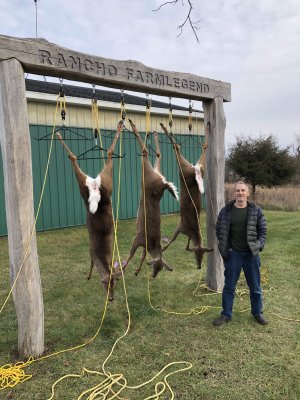Telemark
5 year old buck +

SS-AGR-325/AG335: Soft Rush (Juncus effusus) Biology and Control in Pastures
University of Florida, Institute of Food and Agricultural Sciences Extension outreach is a partnership between state, federal, and county governments to provide scientific knowledge and expertise to the public. The University of Florida (UF), together with Florida A&M University (FAMU)...edis.ifas.ufl.edu
Looks like it has to be applied at right time and high rate.
2-4d is added to gly for burn downs because gly generally smokes grasses, but has more limitations for broadleafs.
Awesome. Thanks. I'll hit it this Spring and hopefully knock it out.


